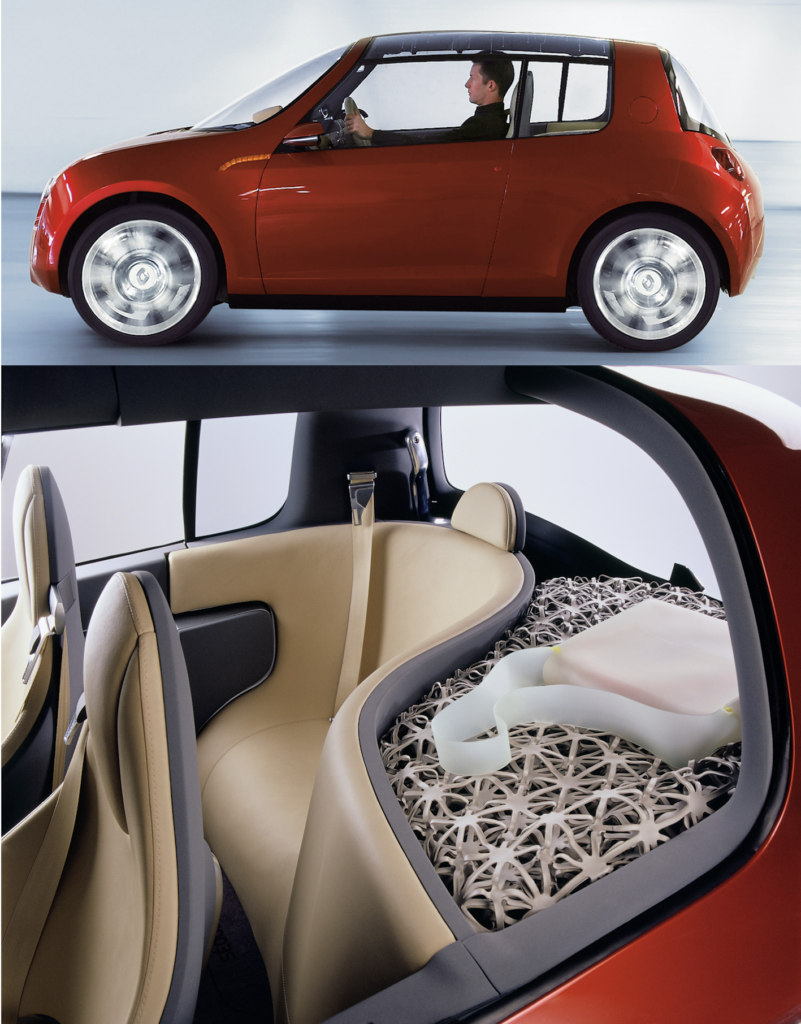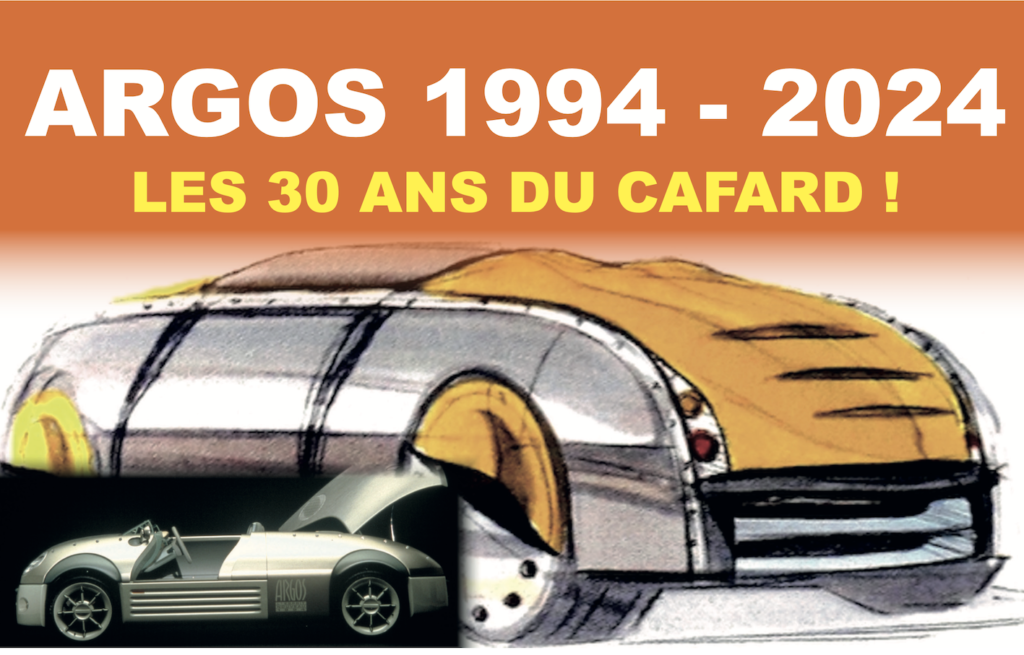
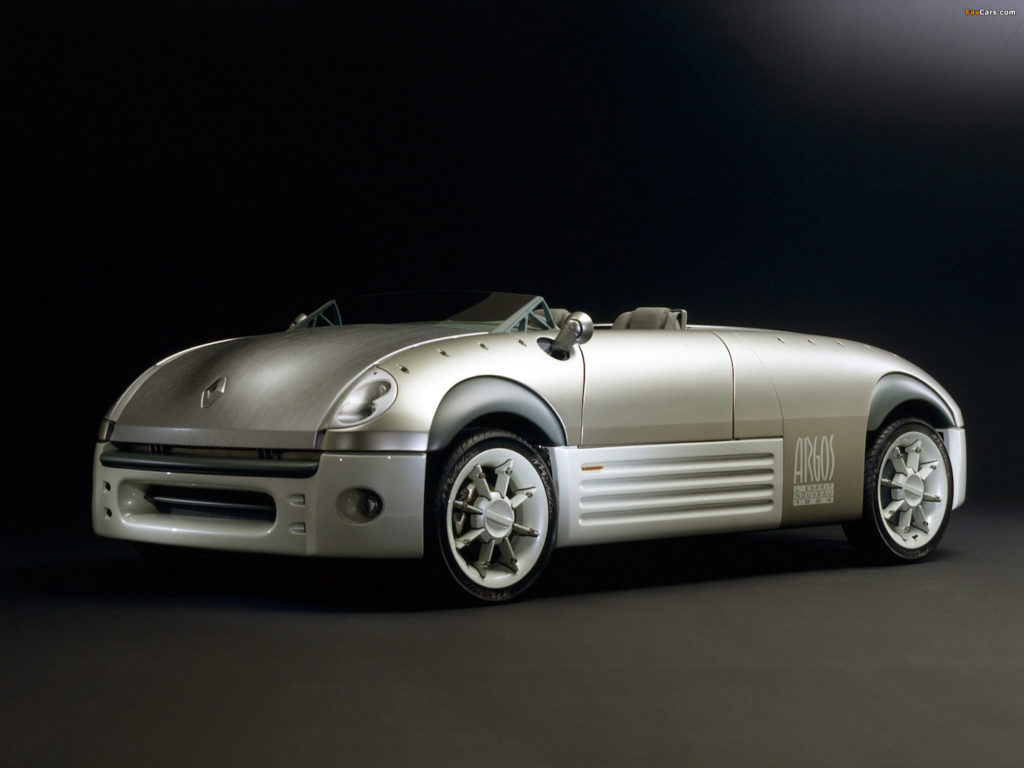
After an initial series of strong concepts in the early 1990s (Laguna, Scénic and Racoon below), not forgetting the brilliant Twingo, the director of Renault Design Industriel – Patrick le Quément – wants to get back to basics. To the essentials. The Argos concept car that was born of this desire became a powerful milestone in Renault design.
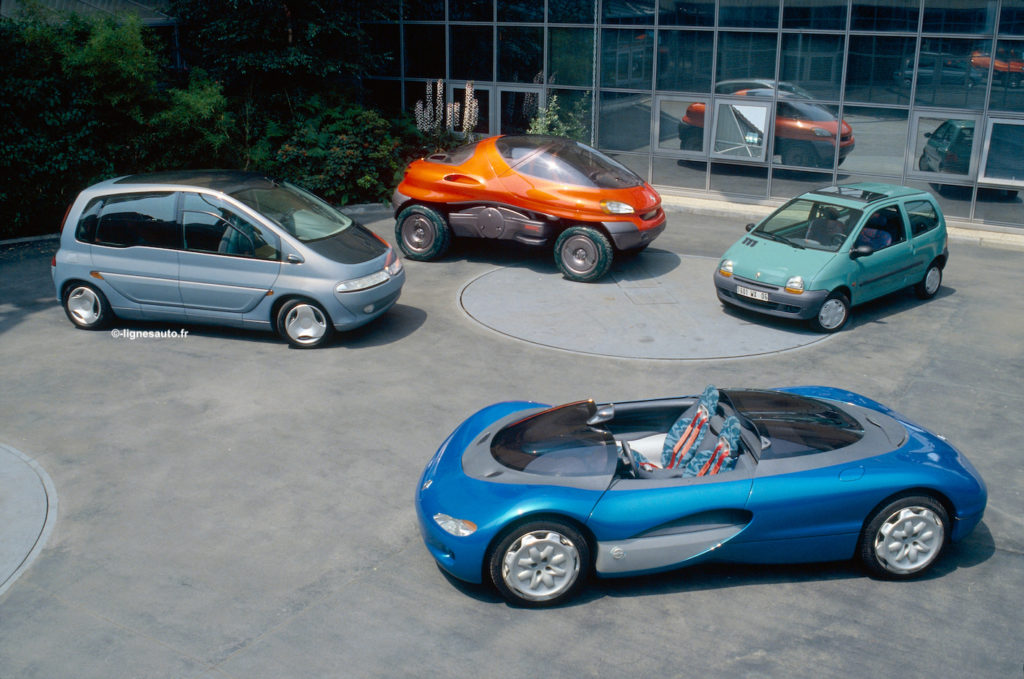
The history of automotive design is punctuated by many currents, from the cruelty of sluggish biodesign to the enchantment of Streamline. Above all, it has been illuminated by a few stars, some of them shooting out of the sky, others timeless. Argos is one of these suns, a milestone in the history of Renault design. And of automotive design, quite simply. And like all great automotive design stories, it began with a little sketch.
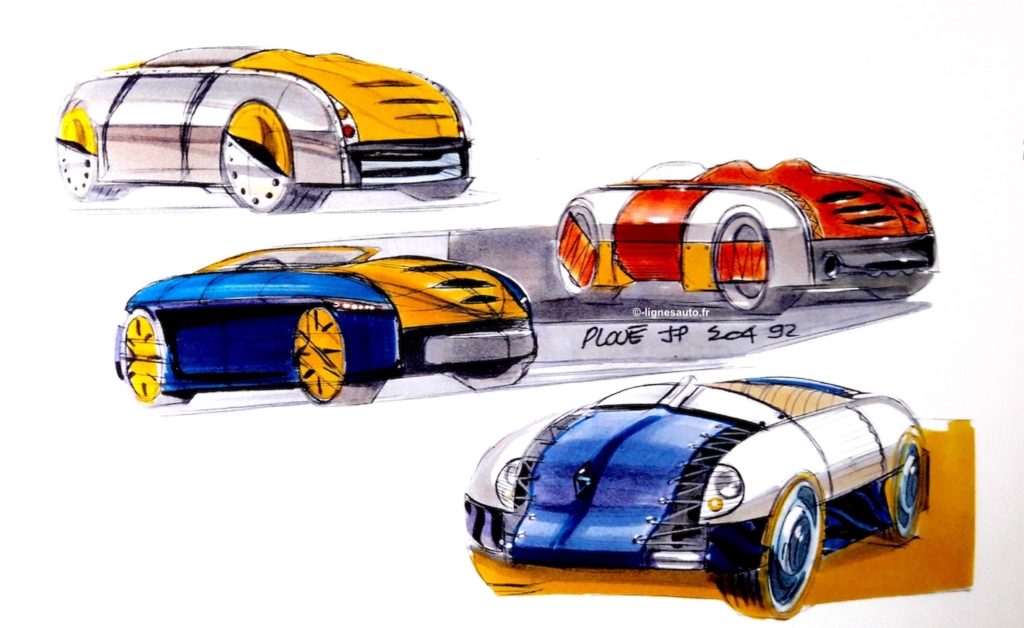
“I used to walk around the Boulogne studio early in the morning,” recalls Patrick le Quément. “At that time, designers still displayed their drawings behind them. Jean-Pierre Ploué had quite a few sketches pinned up behind him, and I immediately spotted one that wasn’t even the size of an A4 sheet. What struck me about this drawing was its asymmetry. At the time, I was in a Year Zero design phase. I wanted to find a new intellectual path for Renault design. Jean-Pierre’s sketch reminded me of Le Corbusier’s Esprit Nouveau.”
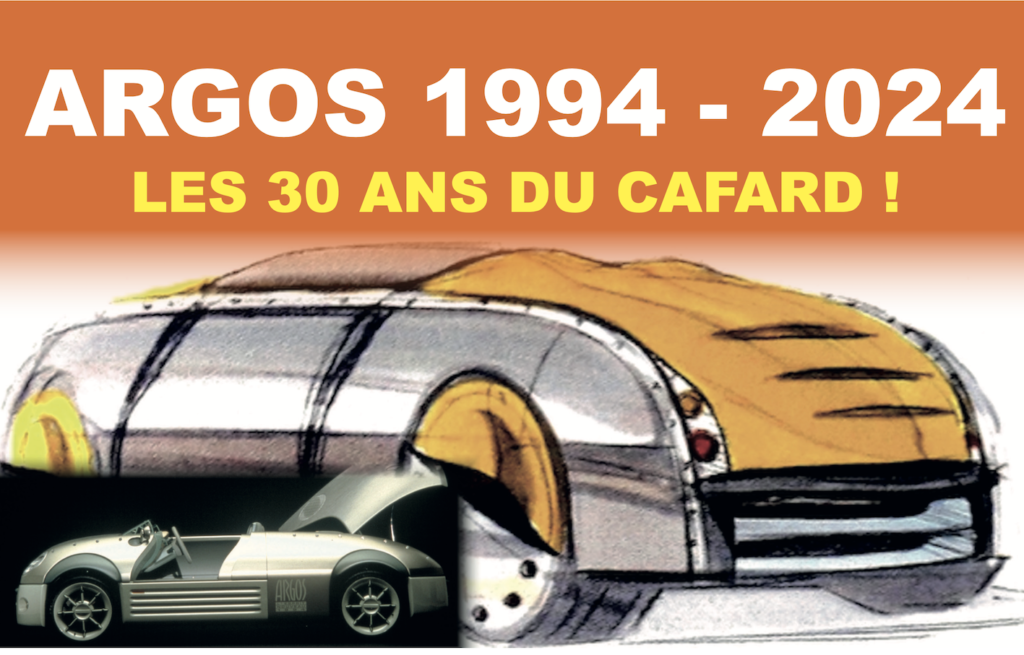
L’Esprit Nouveau was originally a publication (1920-1925) founded by Le Corbusier and Amédée Ozenfant. It was an avant-garde magazine covering art, architecture and science, with the aim of highlighting “the fruit of a mind interested in the problems of the future”, as Le Corbusier put it at the time. The name Esprit Nouveau was also chosen by the architect to name his pavilion for the Exposition Internationale des Arts Décoratifs, held in Paris in 1925 (*).
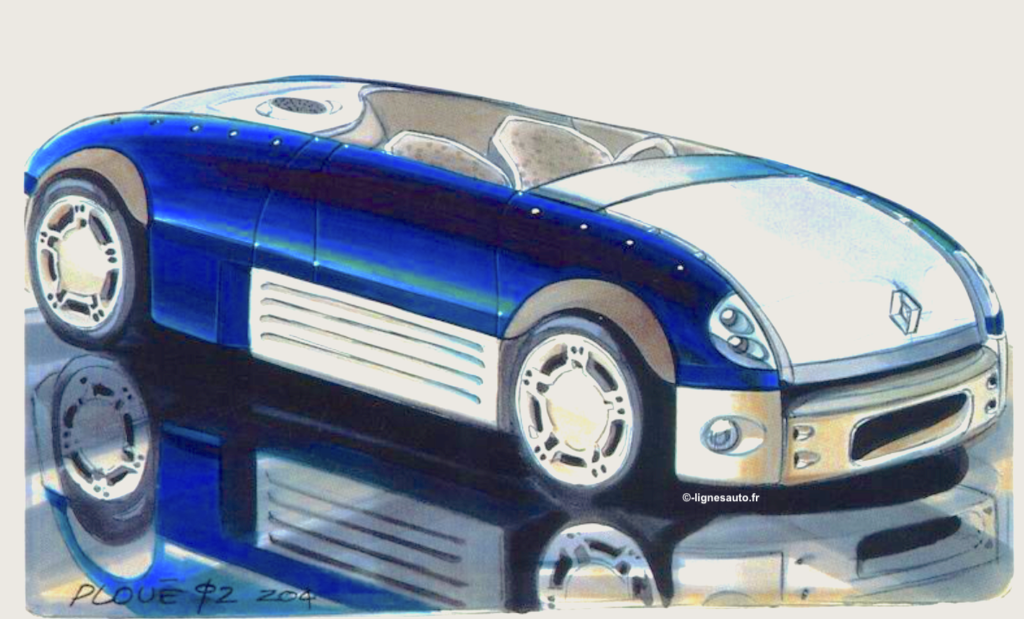
Patrick le Quément explains that “my approach is to go back to basics, adding very French themes, such as the famous asymmetry”. At this time, Jean-Pierre Ploué joined the advanced design team headed by Jean-François Venet. “When I get stuck in front of his design, he’s quite surprised. I think he even said later in an interview, about his sketch of the Argos, that he had drawn a cockroach! I asked him to start from his sketches, and he went quite far, with stretched canvas as the bodywork, with the idea of really going back to basics!”
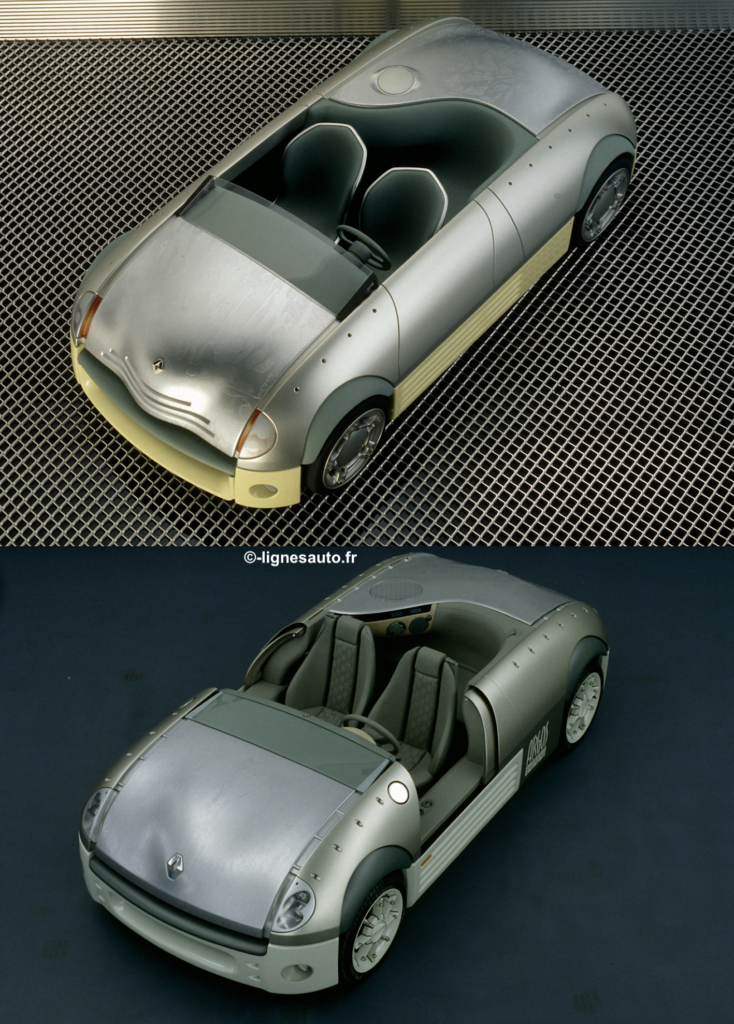
“But at some point, a choice has to be made about the styling theme for this Z04 concept. We’re at a time when you don’t have to go back and forth ten times to make a decision. We had extraordinary autonomy, total freedom! OK, the system caught up with me and I was punished afterwards, but without that autonomy, Argos wouldn’t have been Argos…”. One of the high points in the genesis of this little cockroach came in Italy, when Patrick le Quément went to G-Studio, which produced the 1/1 scale model (below).
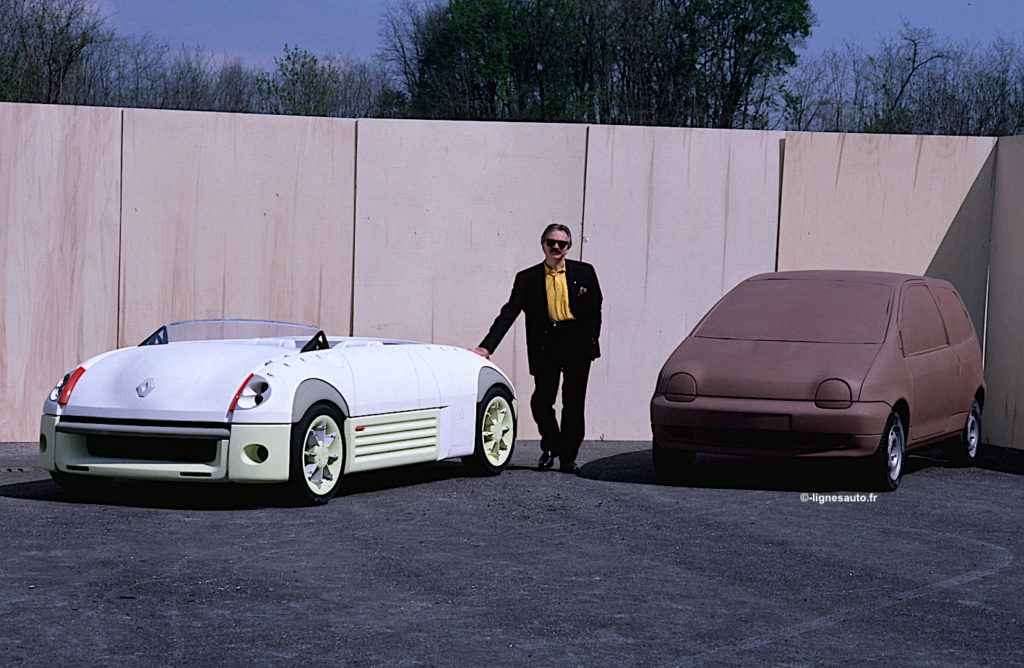
It’s made of plaster, a material that the Italians have mastered to perfection, but it’s far too wide! “During the course of the day, I had the model cut in half lengthways to make it a good fifteen centimetres narrower! ” This veritable manifesto of car design was unveiled at the 1994 Geneva Motor Show, a year before the arrival of the cornerstone of a huge range: the Mégane saloon. While the Mégane used and abused ellipses, Argos tried to put an end to the era of organic design, the famous biodesign adopted by all but abused by some.
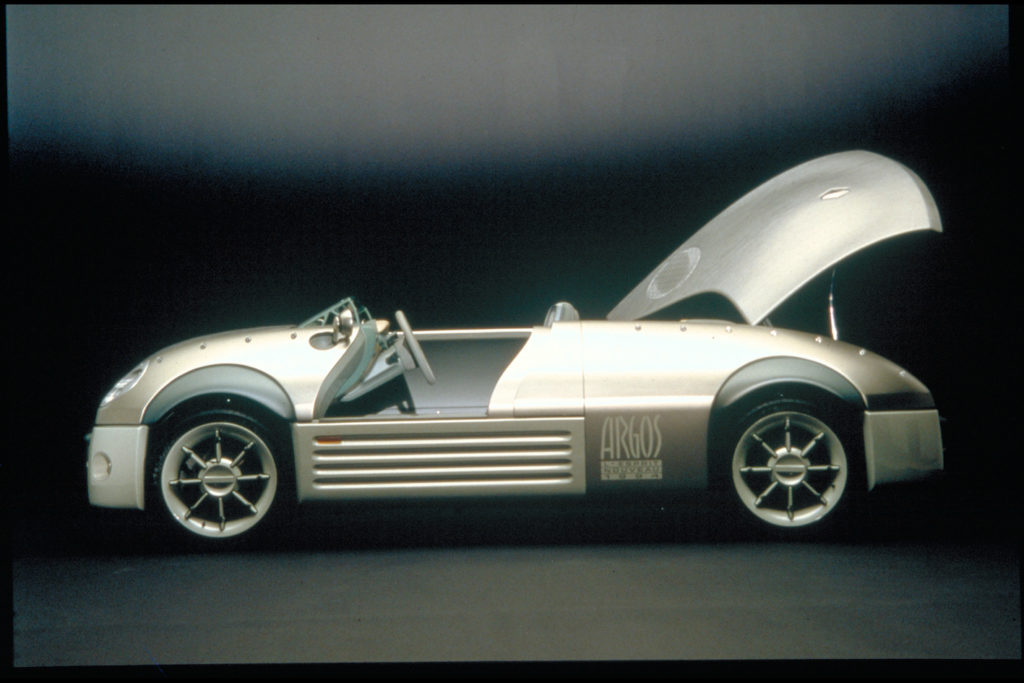
Disconcertingly simple, yet meticulously crafted down to the smallest detail, Argos has introduced a rigorous approach to car design that is setting new standards. While the stretched canvas sails imagined for a time by Jean-Pierre Ploué have disappeared, they have been advantageously replaced by raw aluminium elements with perfectly controlled volumes, even if they appear very elementary. The doors slide into the rear wings, while on board, the asymmetry is enhanced by a third seat that imposes its grand piano rear lid shape on the bonnet (above).
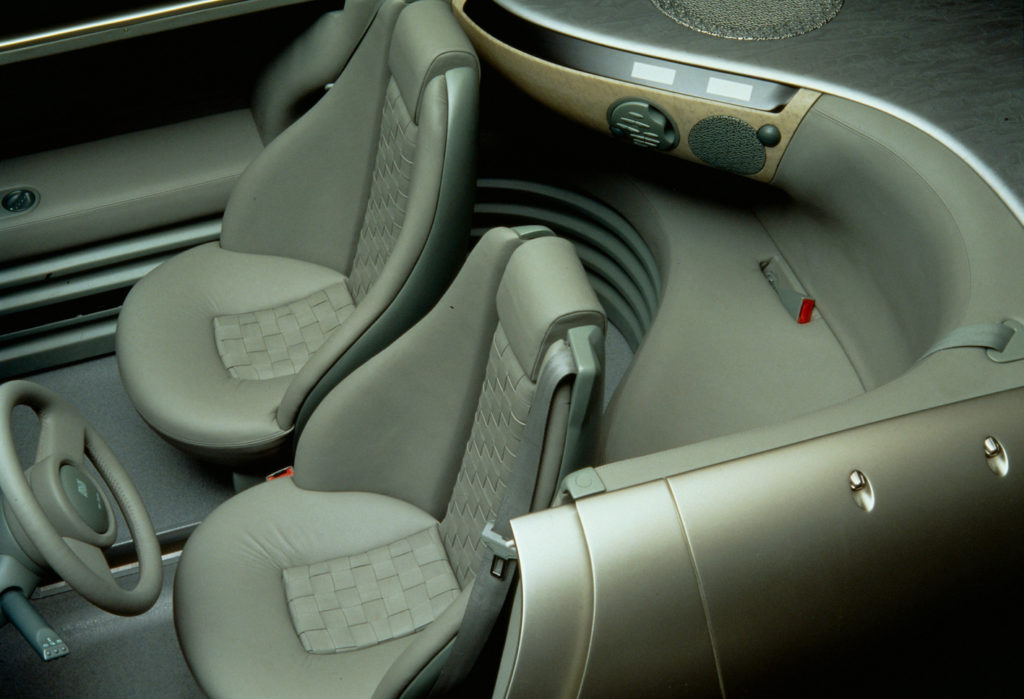
The influence of this concept car in-house was first felt in the 1998 Clio II project. This influence extended well beyond the walls of the in-house design studio. Eighteen months after the presentation of Argos, Audi revealed its Audi TT concept car at the 1995 Frankfurt Motor Show. It was clear that the German company had been inspired by the French car.
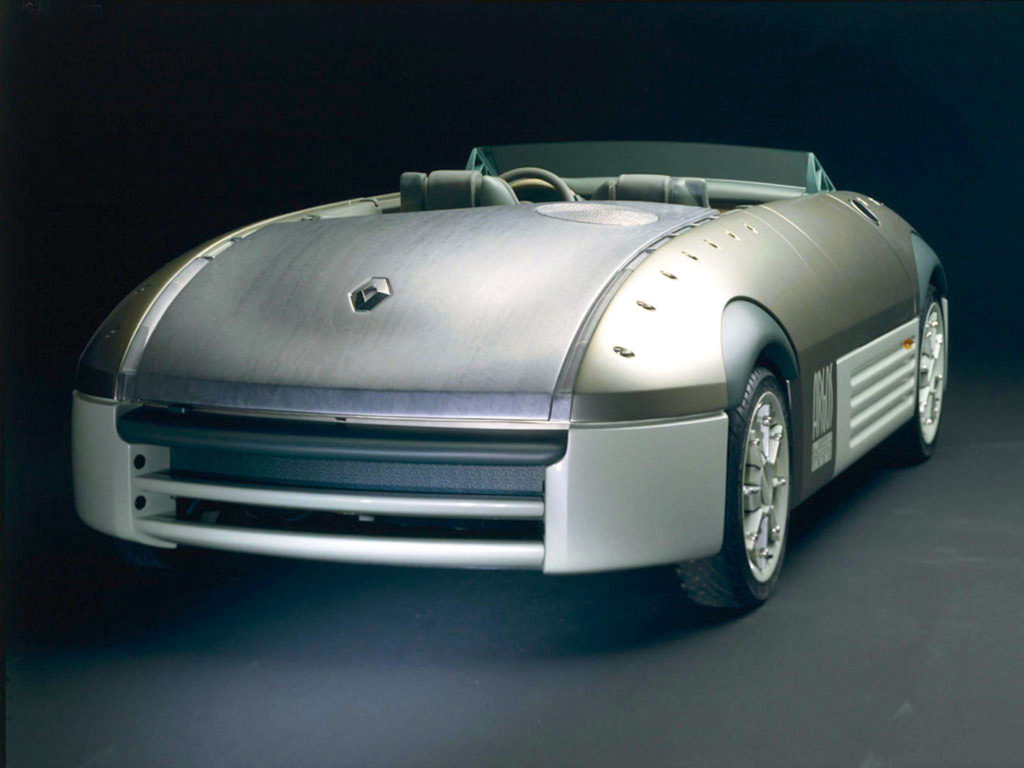
The Argos opened up a new design avenue that Audi took advantage of. However, the Renault concept car also existed in coupé form, as a model was revealed at the Turin Motor Show in 1994 on the G-Studio stand, the subcontractor based in the suburbs of Turin which produced numerous show prototypes – including the Argos – on behalf of the French manufacturer.
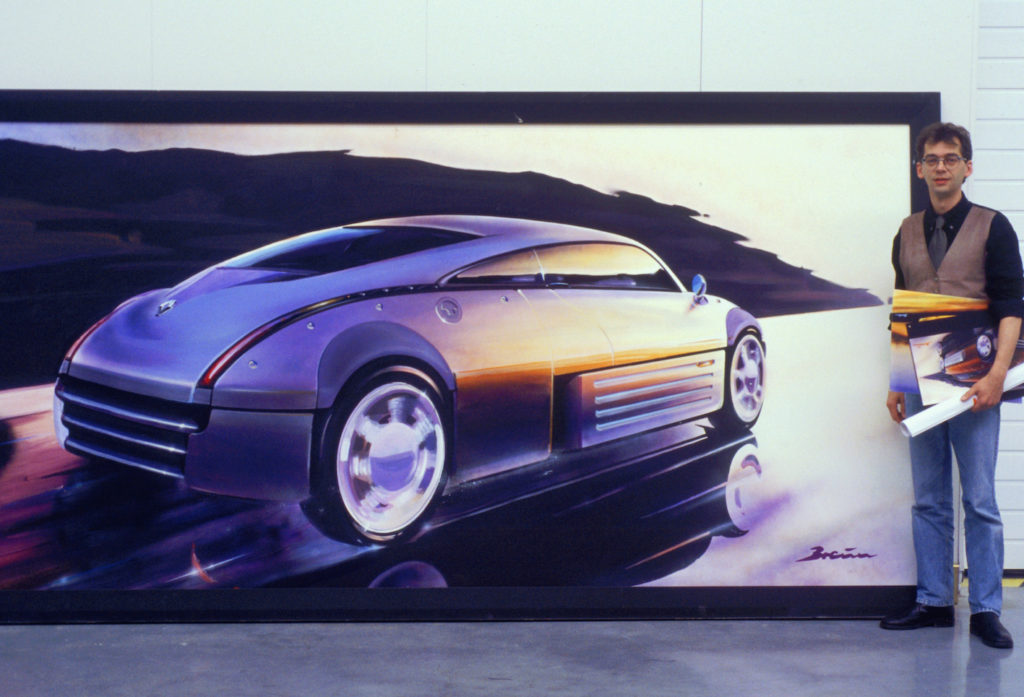
This coupé was followed by Axel Breun (above) who recalls that “this project could have become something grandiose. Based on the Argos, I had designed a coupé version long before the Audi TT. What’s certain is that we and the German designers were working along the same lines in terms of architecture and formal language… But the arrival of the Audi TT showed us that we needed to make the most of a strong concept design as quickly as possible!”
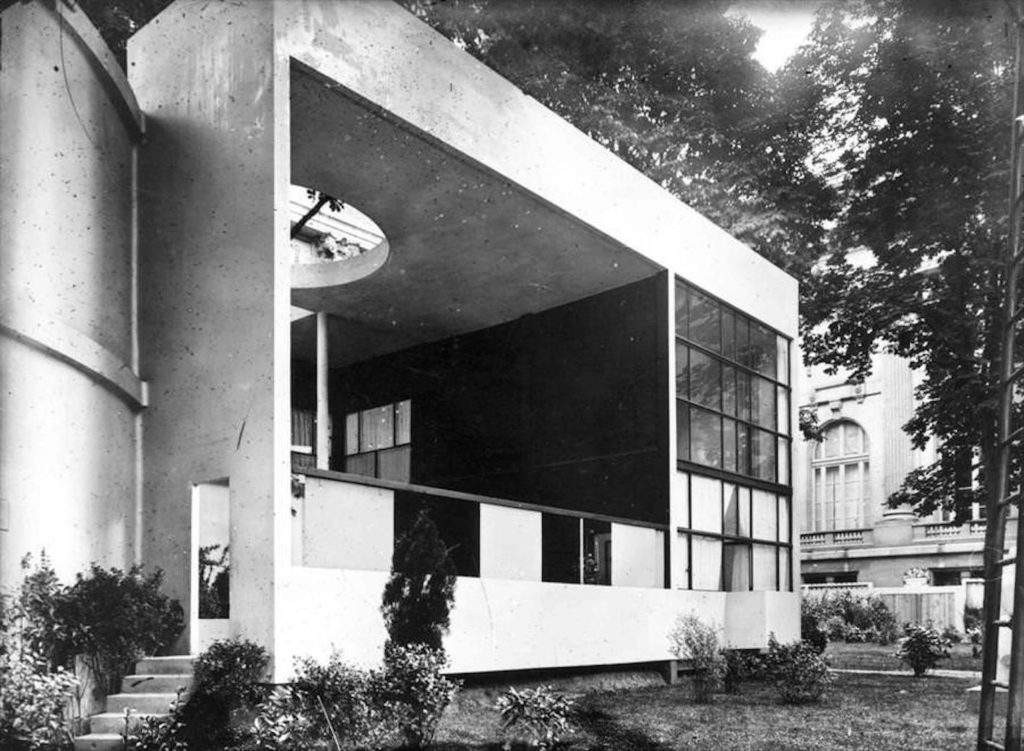
(*) Le Corbusier’s 1925 Pavillon de L’Esprit Nouveau (above) was rebuilt in 1977 in the Italian city of Bologna. It is now located at 11 Piazza della Costituzione, in the Fiera district (40128 Bologna).
READ MORE HERE: https://www.fondationlecorbusier.fr/oeuvre-architecture/realisations-pavillon-de-lesprit-nouveau-paris-france-1924/
In design, nothing is lost. In 2005, when designer Antony Villain – now head of Alpine design – drew up the cute Zoé (code Z17), his project took up the idea of asymmetry and the small rear seat (below).
